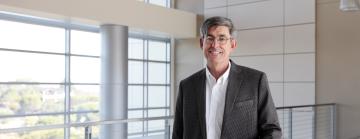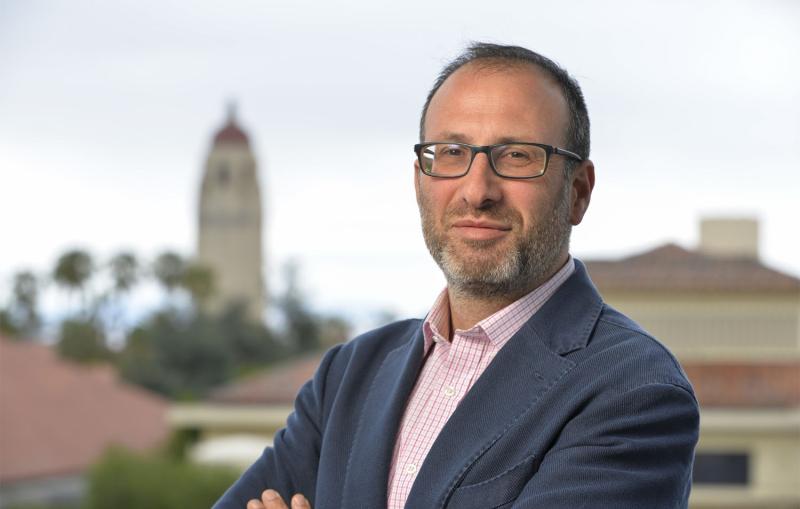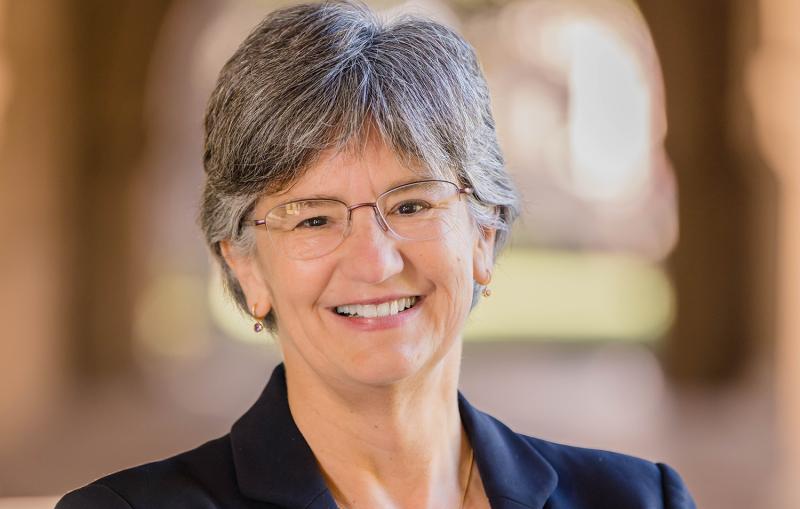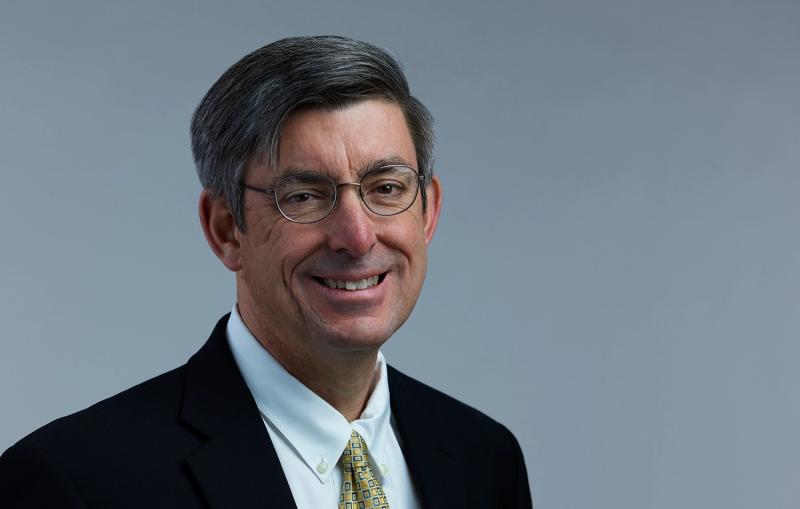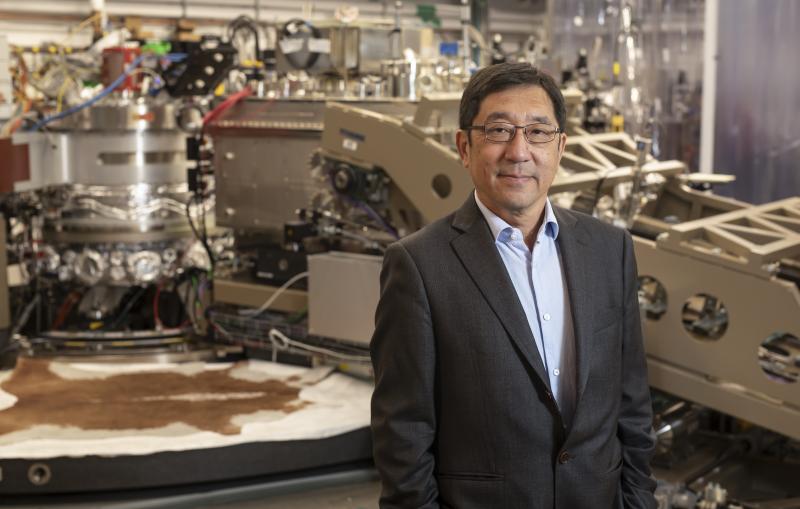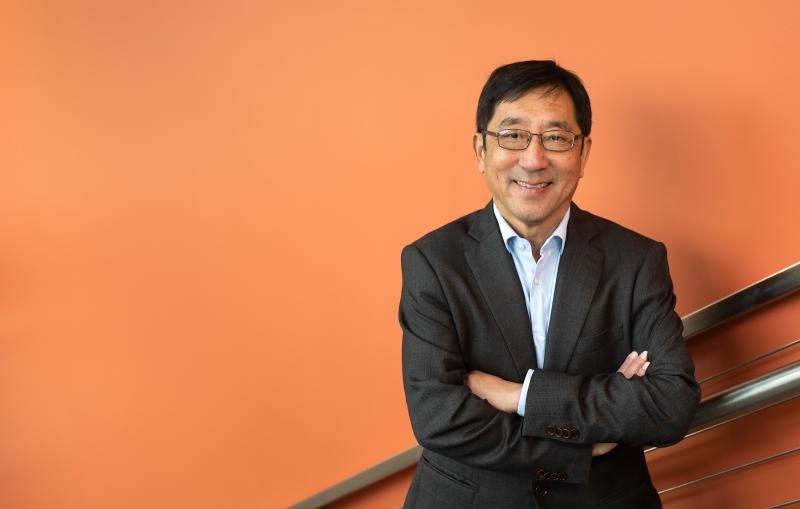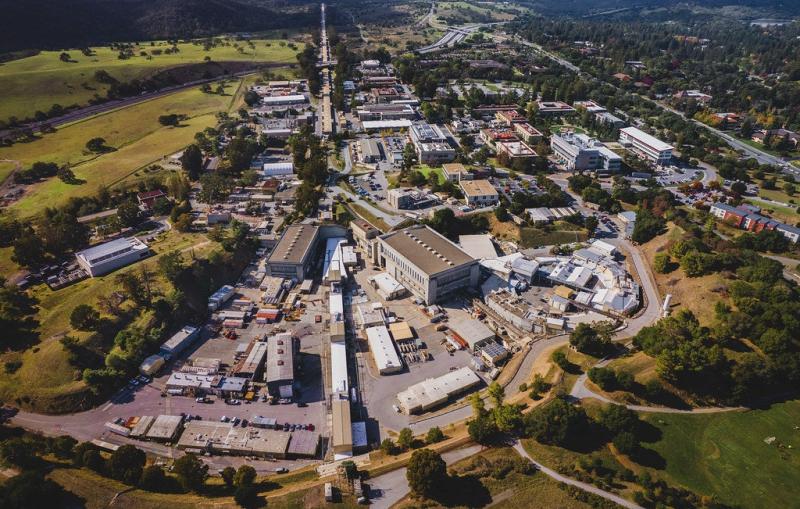Q&A with SLAC Lab Director John Sarrao
A materials scientist who specializes in superconductors, Sarrao brings a deep background in national lab leadership and the evolution of SLAC science.
By Glennda Chui
John L. Sarrao starts his tenure today as the sixth director of the Department of Energy’s SLAC National Accelerator Laboratory. He comes to the lab from a 26-year career at Los Alamos National Laboratory, where, as he puts it, “I started as a grad student and essentially never left – until now, when I’m returning to my undergraduate roots.”
Sarrao’s scientific specialty is the study of superconductors – materials where electrons pair up to conduct electricity with no energy loss. In 2013 he was awarded one of the DOE’s highest honors, the E.O. Lawrence Award, for discovering superconductivity in a material based on plutonium.
Over the years he took on an increasingly large role in managing LANL’s scientific programs. Most recently he was the lab’s chief research officer and deputy director for science, technology and engineering, responsible for 3,500 employees and a $2.3 billion budget. He’s also served on a number of committees, at DOE and elsewhere, that have helped develop the vision for future directions in materials science.
Sarrao arrives with a deep understanding of SLAC and its science from his six years as a member and chair of the SLAC Board of Oversight Science Programs Committee (SPC). The board guides and advises SLAC management and the president of Stanford, which operates the lab for the DOE Office of Science.
At Los Alamos, he was involved in shaping a concept for building an X-ray free-electron laser facility that builds on the design of SLAC’s Linac Coherent Light Source (LCLS). Los Alamos has also been working with SLAC on a SLAC-led project called ExaFEL, which aims to use exascale computing to reduce the time needed to analyze molecular structure data from LCLS from weeks to minutes, among many other joint SLAC-LANL efforts.
Sarrao got his bachelor’s degree in physics at Stanford and PhD from the University of California at Los Angeles. He has won numerous awards for his work and is a fellow of the American Association for the Advancement of Science and the American Physical Society.
We talked about his priorities as lab director, how Stanford shaped his career in science, opportunities for stronger ties with the university, and his thoughts about developing a technically excellent and inclusive workforce.
Let’s go back to the beginning. What inspired your interest in science?
Growing up, I always had a proclivity for math. But I wasn’t one of those tinkering kids who took the toaster apart and put it back together again. And where I grew up, in a town called Mission Viejo, halfway between Los Angeles and San Diego, there was not a particularly strong science fair tradition like there are in some places today.
When I got to Stanford as an undergrad, I migrated to science in general, and physics in particular. I will say many of my good friends ended up being investment bankers and the like, and I was tempted to go into economics, but I found science interesting and never succumbed to the temptation. And here we are!
As for my interest in superconductors, Helen Quinn, who is still on the SLAC faculty, taught an undergraduate research class where we had to pick a paper and deconstruct it. Somehow I stumbled upon a famous paper on superconductivity, and as a kid I didn’t know enough to realize how dense it was. I guess I owe my future in superconductivity to Helen’s motivation.
You’re already familiar with SLAC through your work on the SPC, among other things. Are there things you would like to address or do right off the bat as director?
Having been on the committee and having known people at SLAC, I’m probably an outside expert on the lab. Now I’ve got to learn the lab from the inside. That being said, it’s obvious that this is an exciting moment in time.
The decade of success that LCLS has had is going to get redoubled now that LCLS-II has achieved first light. How we think about LCLS in all its guises, including the way it complements the lab’s Stanford Synchrotron Radiation Lightsource and the decades of great work that SSRL has done, gives us a lot to build on.
I was at SLAC for an SPC meeting when Stanford launched the Doerr School of Sustainability. All of us in science are thinking about how we can take climate and clean energy research to the next level. For the university to found a school on sustainability – if that doesn’t create an opportunity for SLAC, I don’t know what does. What form that opportunity takes I don’t know yet, but it’s a great vehicle to strengthen the partnership that’s always existed between SLAC and Stanford.
Thirdly, people at SLAC have played a central role in defining the particle physics future road map. Seeing how that road map plays out, and then having SLAC play its own important role in what takes place, is a key priority.
And, of course, the operational side of the lab is essential for the success of all the science we do. We need to be leaders in operational excellence in order to deliver on all the great opportunities ahead.
Can you talk about our relationship with Stanford? We recently launched a joint battery research center, and strengthening our partnership has been a longtime priority for both the lab and the university.
Let’s go back to when I was an undergrad and the SLAC of the 1980s. Unambiguously, SLAC was a leading or the leading particle physics lab, and lots of great particle physics had been done at SLAC and Stanford by the lab’s founders.
Dial the clock forward 30 years, and there certainly is a lot of collaboration between individual faculty members at Stanford and SLAC, including work going on in our joint institutes and facilities; the recently launched SLAC-Stanford Battery Center is just the latest example. As the lab’s facilities expand, the amount of collaboration has increased.
Over the last few years, leaders at SLAC and Stanford have been involved in an effort to take that to the next level and invest in bigger initiatives beyond just individual collaborations. Laboratories being installed on the third floor of SLAC’s Arrillaga Science Center are part of that. The trick with any investment is, can you scale up the partnership given the scale of the opportunity? With a laboratory as big and diverse as SLAC, with a university as robust as Stanford, I think the answer is yes.
At Los Alamos, you’ve been very active in workforce development. What lessons do you bring with you from that effort?
As somebody who started working at a national lab as a grad student, the idea that students are an important part of the pipeline to working at the lab is personal to me.
The opportunity to be a student at a national lab was totally different than being one of a number of grad students in a university research group. There was just one of me and dozens of laboratory staff around. I was able to do even more science, explore even more diverse interests, than I would have otherwise.
Los Alamos is a large lab where 2,000 students work every year and 500 postdocs are working at any moment in time, and something like 40% of them join the permanent staff. It’s an enormous part of the Los Alamos pipeline.
If you want the future workforce to be technically excellent and intellectually diverse and representative of your community, then you’ve got to get it right at the student and postdoc level. This is equally true for our operational mission – we need people from a wide range of backgrounds, experience and expertise, and Los Alamos has pipeline and student programs for those essential skill sets as well. That’s why I spend a lot of time on these topics.
One thing that seems to work is to bring in cohorts of students for visits – maybe 20 at a time from the same university – and maybe 10 of them will decide to work for the lab. They all know each other, and that helps them create community.
One of the exciting things about SLAC is that we have all those Stanford students and postdocs right in our backyard. Some of those students are getting valuable hands-on training and research experience at SLAC. How do we double down on that, and are there other communities for us to engage with?
Increasing diversity, equity and inclusion is a big priority at SLAC. What are your thoughts about how to address it going forward?
While the demographics of diversity are important, I would argue they are necessary but not sufficient. It’s really about creating the right inclusive culture where everyone feels like they belong.
SLAC is in the middle of a very diverse region, and one thing we can work on is recruiting better locally, including sparking an interest in science, technology and engineering at the K-12 level. There are regions like the Central Valley and south of Silicon Valley that we could tap. We’re doing great work, and I‘m sure we can do even more.
You can do whatever you want top-down and say, “I shall achieve the following diversity demographics,” but that’s pretty hollow if you’re not committed to doing the work to change the pipeline perspective and create the inclusive culture we need so people feel like they belong. You have to both get people in the door and convince them that working at SLAC and living in the region is something that’s both achievable and exciting.
Is there anything else you’d like to add?
I’m excited to be here, and we’ve talked about most of the reasons why. There’s certainly the family appeal for a kid who grew up in California and had his first experience of the real world at Stanford. My extended family is still in California. I think the science at SLAC is exciting and has a lot of high potential. We talked about the synergy with Stanford as well.
We have important work to do at the laboratory. But from what I’ve seen so far, we’re also a family, working together but also appreciating our colleagues and their communities.
My first visit to the lab after being named director was Family Day. It was great to see and meet a bunch of SLAC staff and their families, including people who had been friends for a long time and were just now getting reconnected after COVID-19 restrictions were relaxed, so that was really cool. For my Day One introduction to the lab, I could not have had anything better than that.
For questions or comments, contact the SLAC Office of Communications at communications@slac.stanford.edu.
About SLAC
SLAC National Accelerator Laboratory explores how the universe works at the biggest, smallest and fastest scales and invents powerful tools used by researchers around the globe. As world leaders in ultrafast science and bold explorers of the physics of the universe, we forge new ground in understanding our origins and building a healthier and more sustainable future. Our discovery and innovation help develop new materials and chemical processes and open unprecedented views of the cosmos and life’s most delicate machinery. Building on more than 60 years of visionary research, we help shape the future by advancing areas such as quantum technology, scientific computing and the development of next-generation accelerators.
SLAC is operated by Stanford University for the U.S. Department of Energy’s Office of Science. The Office of Science is the single largest supporter of basic research in the physical sciences in the United States and is working to address some of the most pressing challenges of our time.
